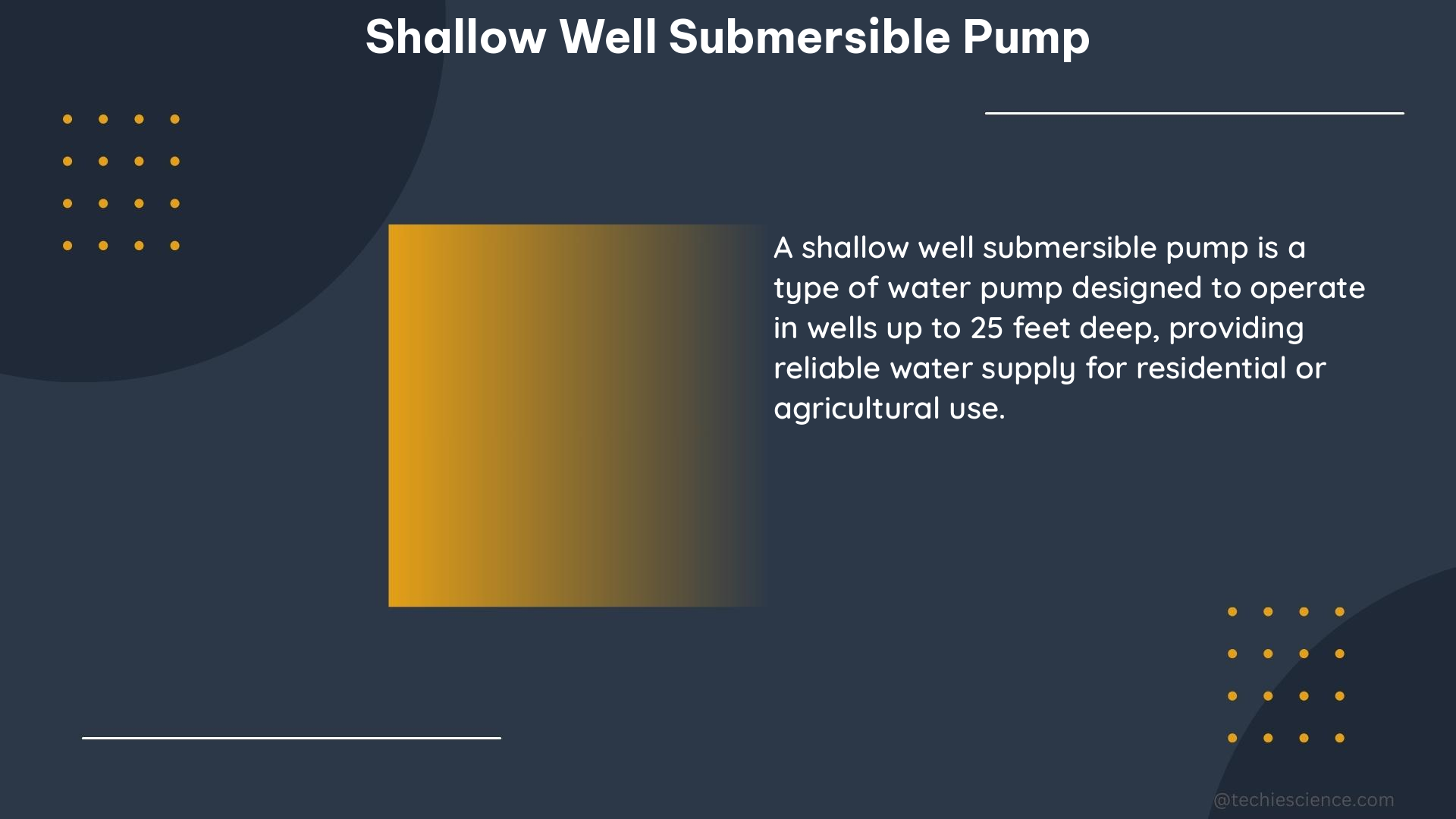Shallow well submersible pumps are designed to operate in wells with a depth of up to 25 feet, making them a popular choice for residential and small-scale agricultural applications. These pumps are known for their energy-efficiency, as they don’t have to lift water as high as their deep well counterparts. The efficiency of a submersible pump is determined by its global efficiency, which is the ratio of the effective power at the measurement point to the pressure losses depending on the flow rate.
Understanding Pump Efficiency
The efficiency of a submersible pump is a crucial factor in determining its performance and energy consumption. A study comparing the efficiency of an asynchronous submersible motor (ASM) pump and a permanent magnet synchronous motor (PMSM) pump in a water collection system found some interesting results:
| Pump Type | Best Efficiency Point | Flow Rate |
|---|---|---|
| ASM Pump | 61% | 125 m³/h |
| PMSM Pump | 68% | 180 m³/h |
These findings highlight the importance of selecting the right pump for your application, as the PMSM pump demonstrated a higher efficiency at a higher flow rate compared to the ASM pump.
Diagnosing Pump Issues

When troubleshooting a problem with a submersible pump, it’s crucial to consider several factors that can impact its performance and efficiency. These include:
-
Pump Outlet Position: The position of the pump outlet can significantly affect the pressure losses and, consequently, the efficiency of the pump. If the pump outlet is too high, it can create unnecessary pressure losses, reducing the overall efficiency of the system.
-
Wellhead Level: The level of the wellhead, which is the top of the well casing, can also influence the pump’s performance. If the wellhead level is too low, it can cause the pump to draw in air, leading to reduced efficiency and potential damage to the pump.
-
Pressure Measurement Point: The location of the pressure measurement point can impact the accuracy of the efficiency calculations. It’s important to ensure that the pressure is measured at the appropriate point in the system to get an accurate representation of the pump’s performance.
-
Groundwater Level: The level of the groundwater in the well can also affect the pump’s efficiency. If the groundwater level drops too low, the pump may have to work harder to draw in water, leading to decreased efficiency.
Measuring Flow Rate
Determining the flow rate of a well pump is an essential step in evaluating its performance. To measure the flow rate, you can use a simple method:
- Obtain a container with a known volume, such as a 5-gallon bucket.
- Use a stopwatch or a cell phone to time how long it takes to fill the container.
- Calculate the flow rate by dividing the container volume by the time it took to fill it.
For example, if it takes 30 seconds to fill a 5-gallon bucket, the flow rate would be 10 gallons per minute (GPM).
Advanced Efficiency Considerations
In addition to the factors mentioned above, there are other advanced considerations that can impact the efficiency of a shallow well submersible pump:
-
Pump Curve: The pump curve, which is a graphical representation of the pump’s performance characteristics, can provide valuable insights into the pump’s efficiency across different flow rates and head pressures. Analyzing the pump curve can help you select the most appropriate pump for your application.
-
Motor Efficiency: The efficiency of the submersible motor that powers the pump is also a crucial factor in the overall system efficiency. Choosing a high-efficiency motor, such as a permanent magnet synchronous motor (PMSM), can significantly improve the pump’s energy consumption.
-
Pipe Sizing: The size and length of the pipes in the water distribution system can affect the pressure losses and, consequently, the pump’s efficiency. Properly sizing the pipes can help minimize these losses and optimize the system’s performance.
-
Impeller Design: The design of the pump’s impeller, which is the rotating component that creates the suction and pressure, can also impact the pump’s efficiency. Manufacturers often optimize the impeller design to maximize the pump’s performance and efficiency.
-
Maintenance and Wear: Regular maintenance and monitoring for wear and tear on the pump’s components, such as the impeller and bearings, can help maintain the pump’s efficiency over time. Replacing worn parts can restore the pump’s performance and energy efficiency.
By understanding these advanced efficiency considerations, you can make informed decisions when selecting, installing, and maintaining a shallow well submersible pump to ensure optimal performance and energy savings.
Conclusion
Shallow well submersible pumps are a popular choice for residential and small-scale agricultural applications due to their energy-efficiency and suitability for wells up to 25 feet deep. By understanding the factors that influence pump efficiency, such as the pump outlet position, wellhead level, pressure measurement point, and groundwater level, you can diagnose and address any issues that may arise with your submersible pump. Additionally, measuring the flow rate and considering advanced efficiency factors, like the pump curve, motor efficiency, pipe sizing, impeller design, and maintenance, can help you optimize the performance and energy consumption of your shallow well submersible pump.
References:
– Diagnosing and Replacing a Submersible Well Pump
– Efficiency Comparison of Asynchronous and Permanent Magnet Synchronous Motor Pumps in a Water Collection System
– How to Measure Well Pump Flow Rate

The lambdageeks.com Core SME Team is a group of experienced subject matter experts from diverse scientific and technical fields including Physics, Chemistry, Technology,Electronics & Electrical Engineering, Automotive, Mechanical Engineering. Our team collaborates to create high-quality, well-researched articles on a wide range of science and technology topics for the lambdageeks.com website.
All Our Senior SME are having more than 7 Years of experience in the respective fields . They are either Working Industry Professionals or assocaited With different Universities. Refer Our Authors Page to get to know About our Core SMEs.